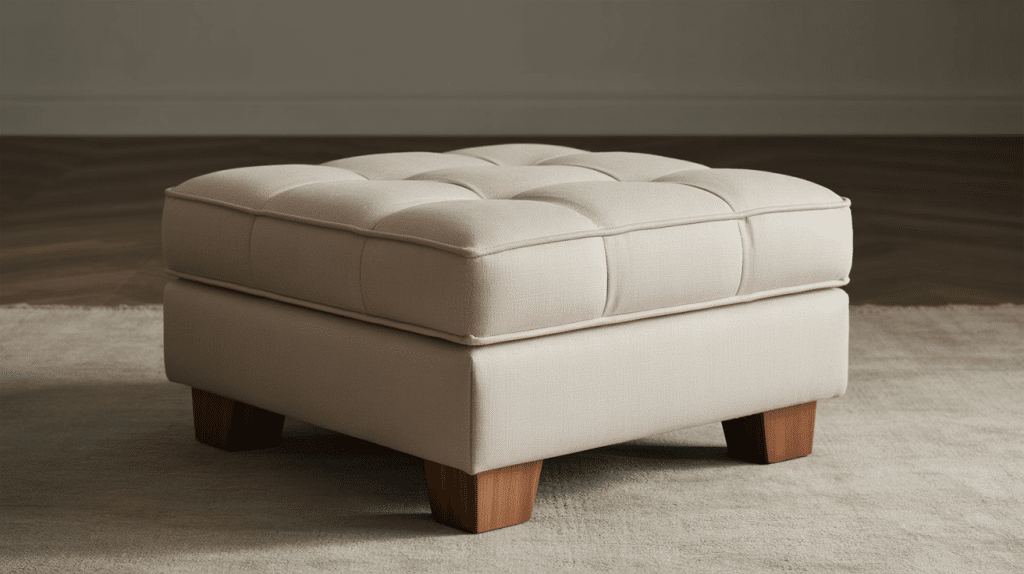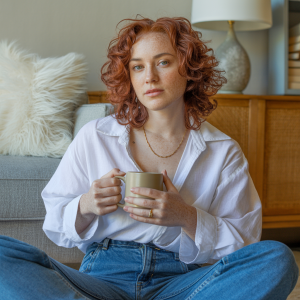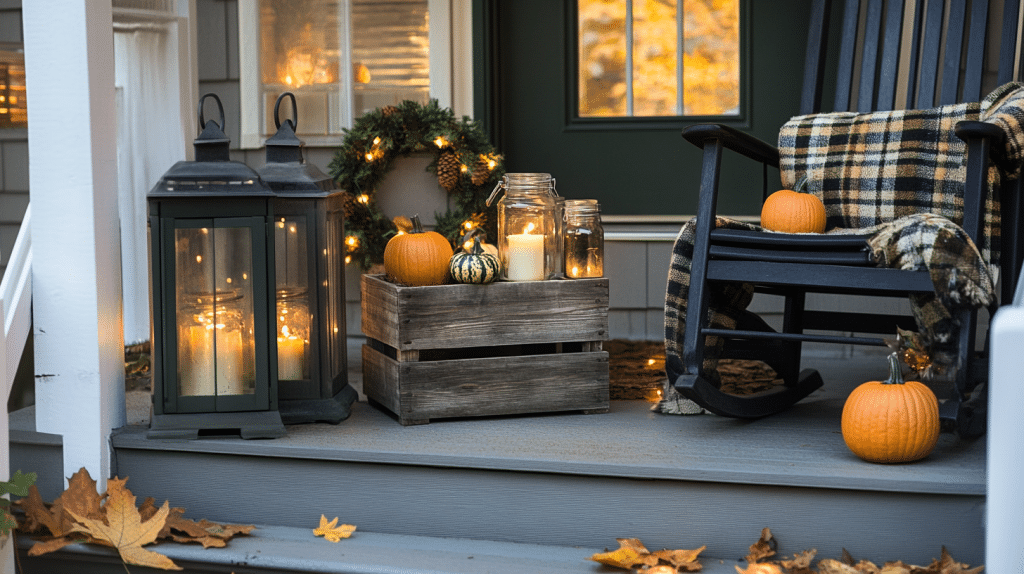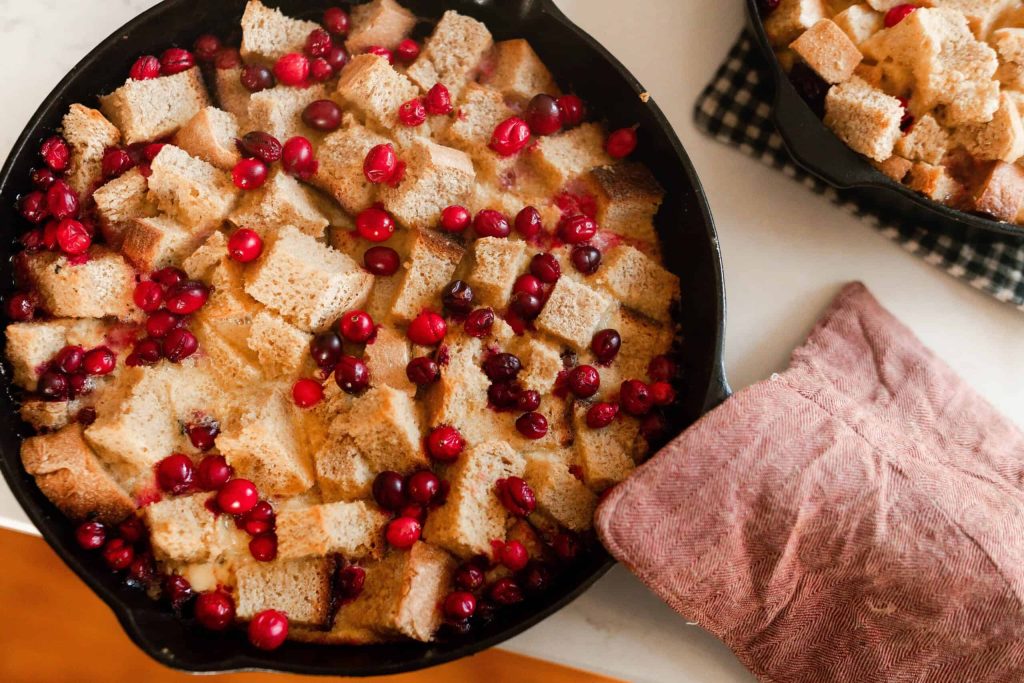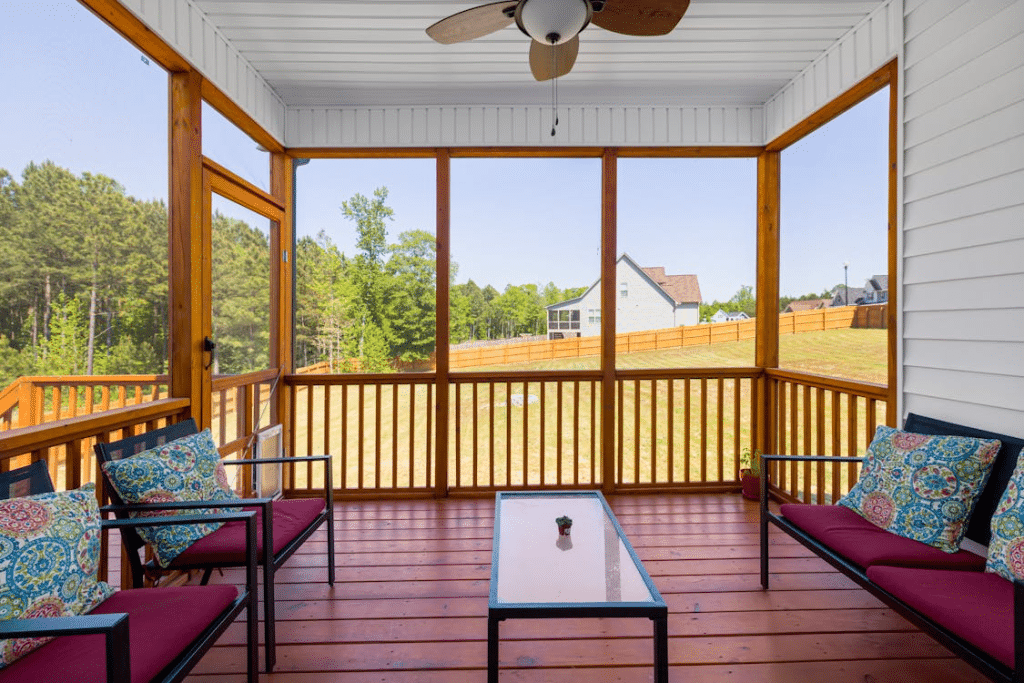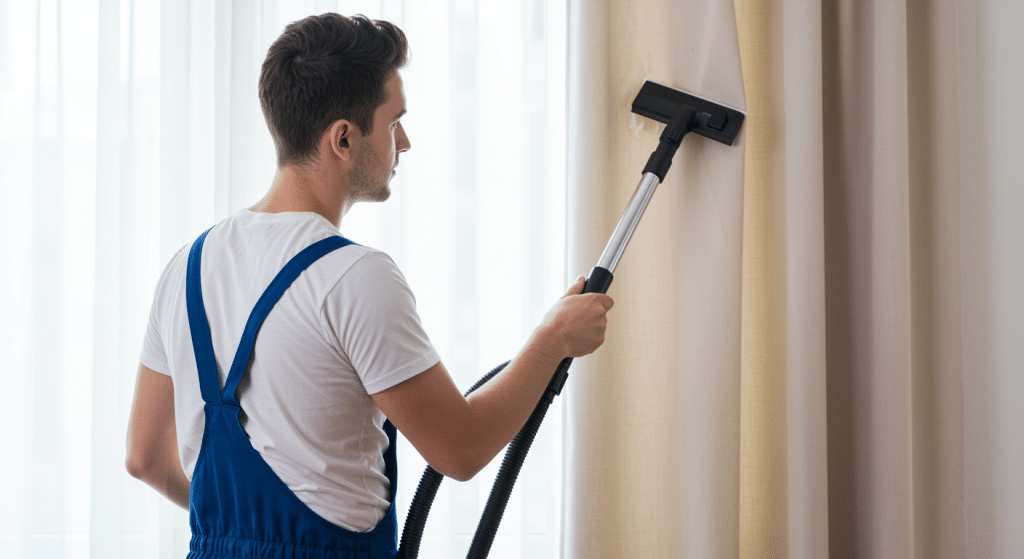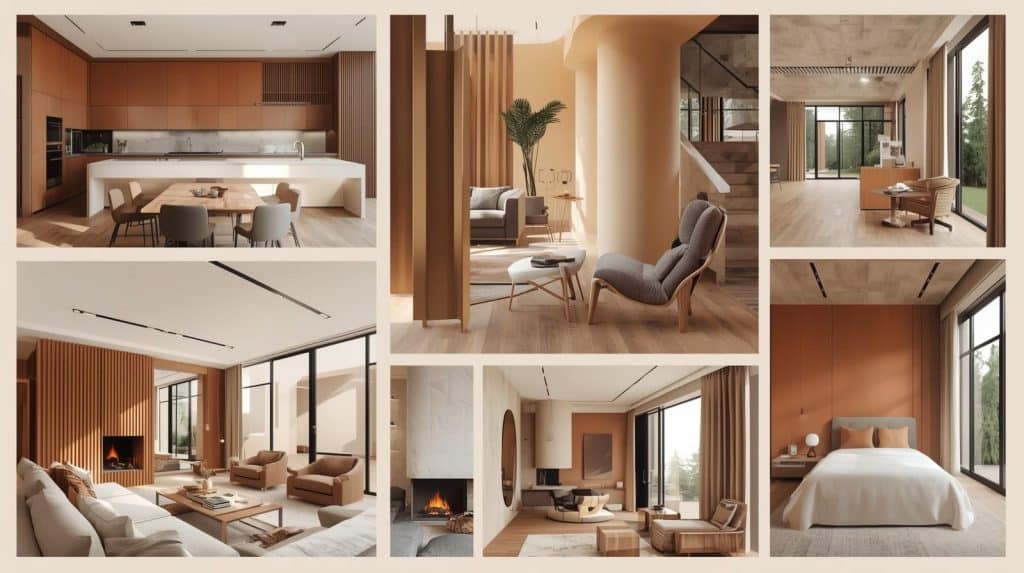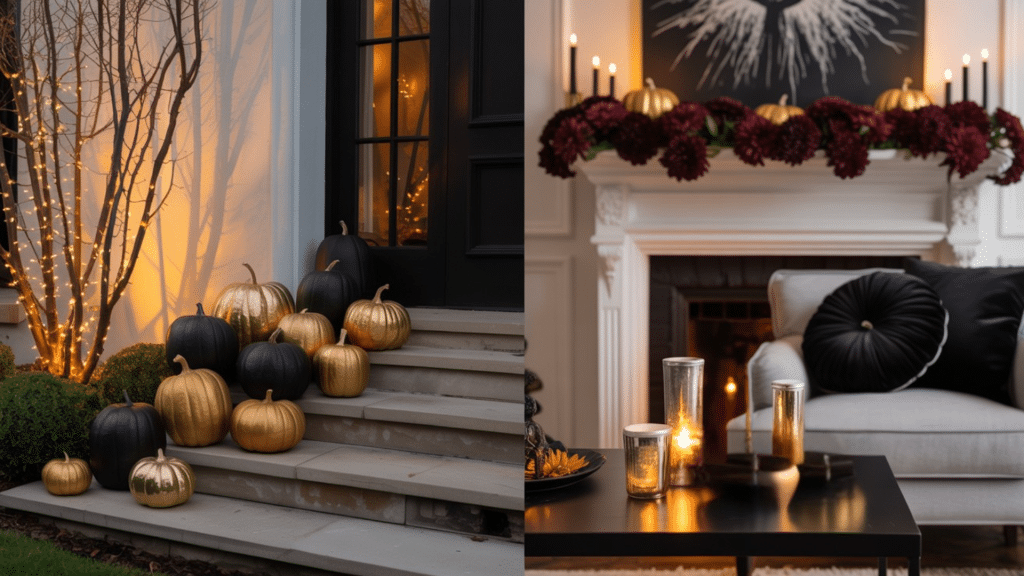Bought an ottoman that looked great in the store?
Then you got it home and realized it’s too big, the wrong color, or just doesn’t work with your furniture. Now it sits awkwardly in the corner, and you’re not sure what to do with it.
It’s about finding one that fits your space, matches how you actually live, and does what you need it to do.
This blog shows you exactly what to look for before you buy, so you end up with an ottoman you’ll actually use and love.
An Ottoman and its Types
An ottoman is a padded, upholstered seat without a back or arms. It’s one of the most versatile pieces of furniture you can own.
Ottomans work as footrests, extra seating, coffee tables, and storage. Their flexibility makes them popular in living rooms, bedrooms, and entryways.
Types of Ottomans
- Storage ottomans: Have a hollow interior with a hinged or removable top. Perfect for stashing blankets, toys, or clutter. Great for small spaces.
- Cocktail ottomans: Large and flat-topped, designed to replace or complement a coffee table. Add a tray on top for drinks and snacks.
- Poufs: Small, round ottomans that are lightweight and easy to move. Great as extra seating or footrests.
- Tufted ottomans: Feature button detailing that creates a quilted pattern. They add visual interest and a classic look.
- Bench ottomans: Long and rectangular. They seat multiple people and often go at the foot of a bed. Some have storage underneath.
- Cube ottomans: Square and compact. They’re modular, so you can group several together for flexible seating.
- Round ottomans: Circular and soften the look of angular furniture. They work well in corners or tight spaces.
Benefits of Having an Ottoman in Your Home
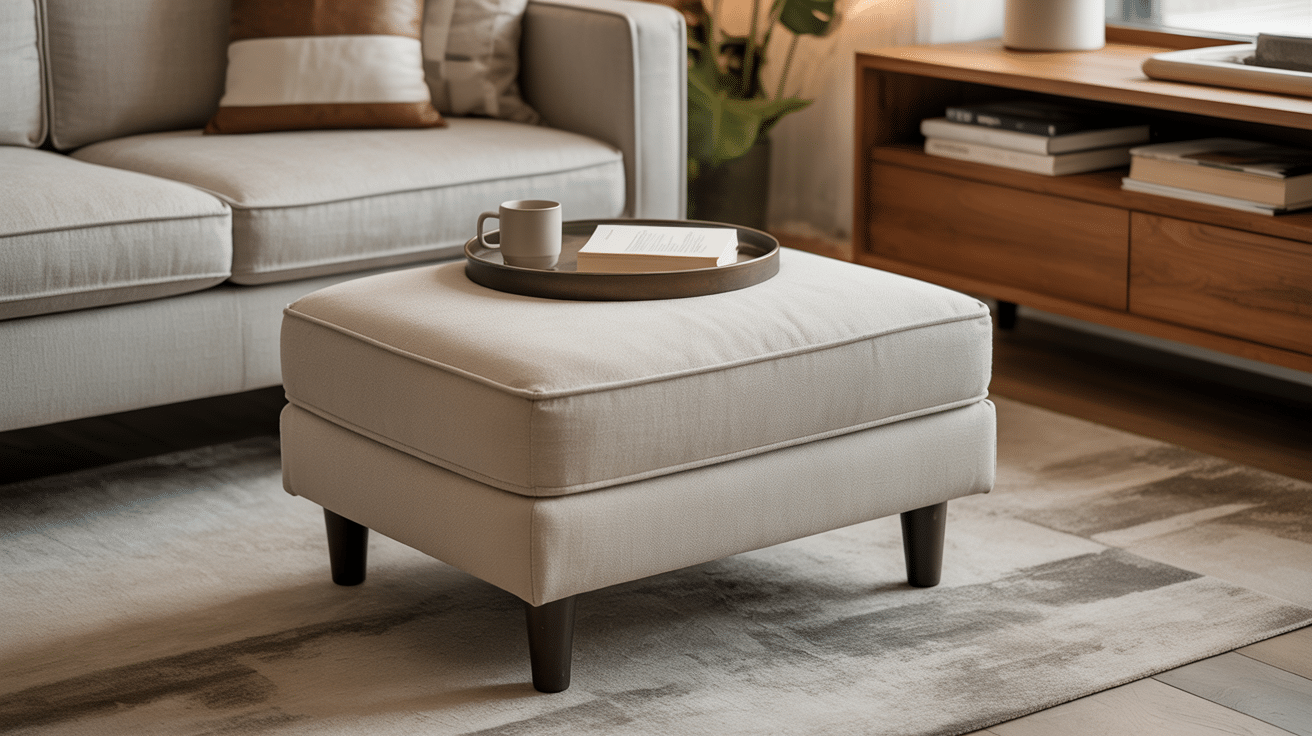
Ottomans solve multiple problems while taking up minimal space.
1. Extra seating: Provides quick seating for guests without taking up much room. Easy to move where needed.
2. Footrest comfort: Let’s you prop up your feet and relax. Improves circulation and makes any chair more comfortable.
3. Hidden storage: Storage ottomans hide blankets, remotes, magazines, and toys while looking stylish.
4. Coffee table alternative: Add a tray on top for a softer, safer surface. Perfect for homes with young kids.
5. Space saver: Tucks under tables or beside furniture when not in use. Maximizes function without crowding rooms.
6. Design flexibility: Comes in endless fabrics, colors, and styles. An easy way to add texture or color to any room.
7. Affordable update: Cheaper than buying major furniture. A simple way to refresh your space without spending much.
Style Considerations for Using Ottoman in Different Rooms
Each room in your home has different needs and traffic patterns that influence the choice of an ottoman.
Understanding how ottomans work in different rooms helps you pick the right style and function for each space.
1. Living Room Placement
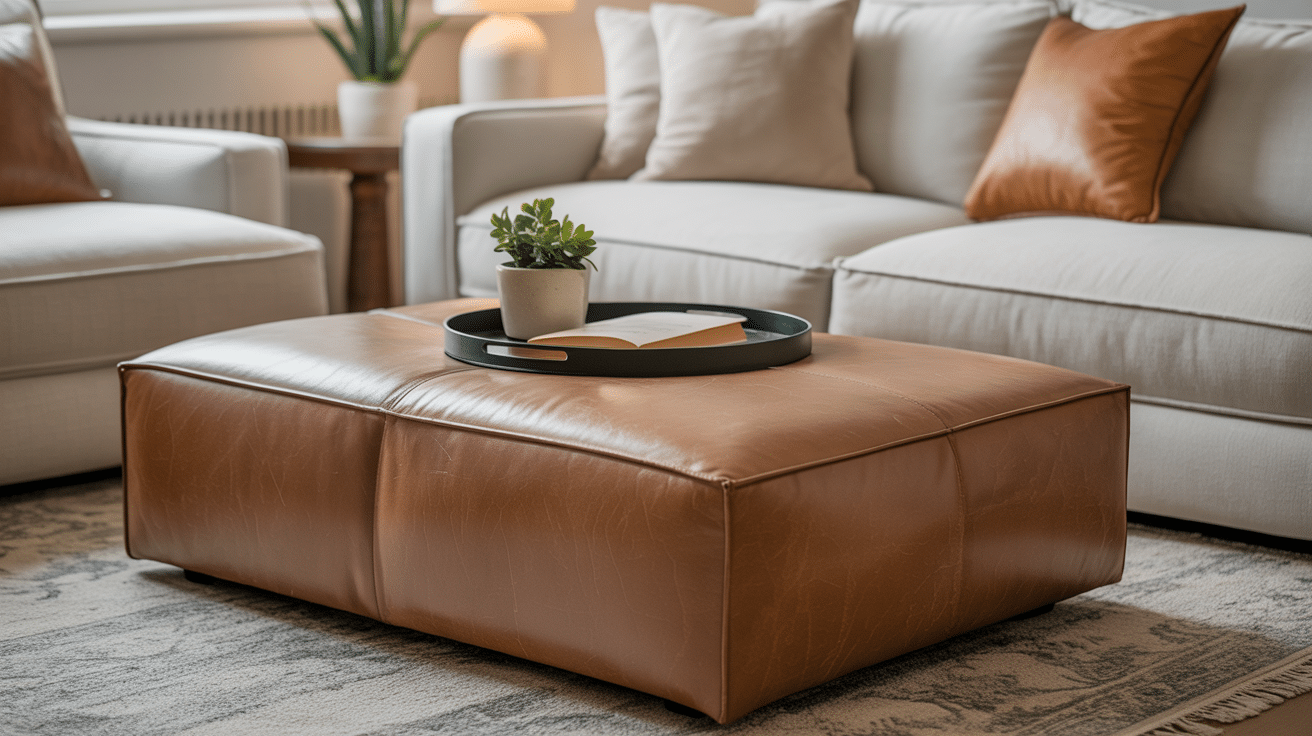
Your living room ottoman should complement your sofa or sectional. If your couch is neutral, try a bold ottoman color. If your sofa is already colorful, go with something more subtle.
Position matters too. Place it within easy reach of your main seating. You want to stretch out your legs comfortably.
For large sectionals, consider two smaller ottomans instead of one big one.
2. Bedroom
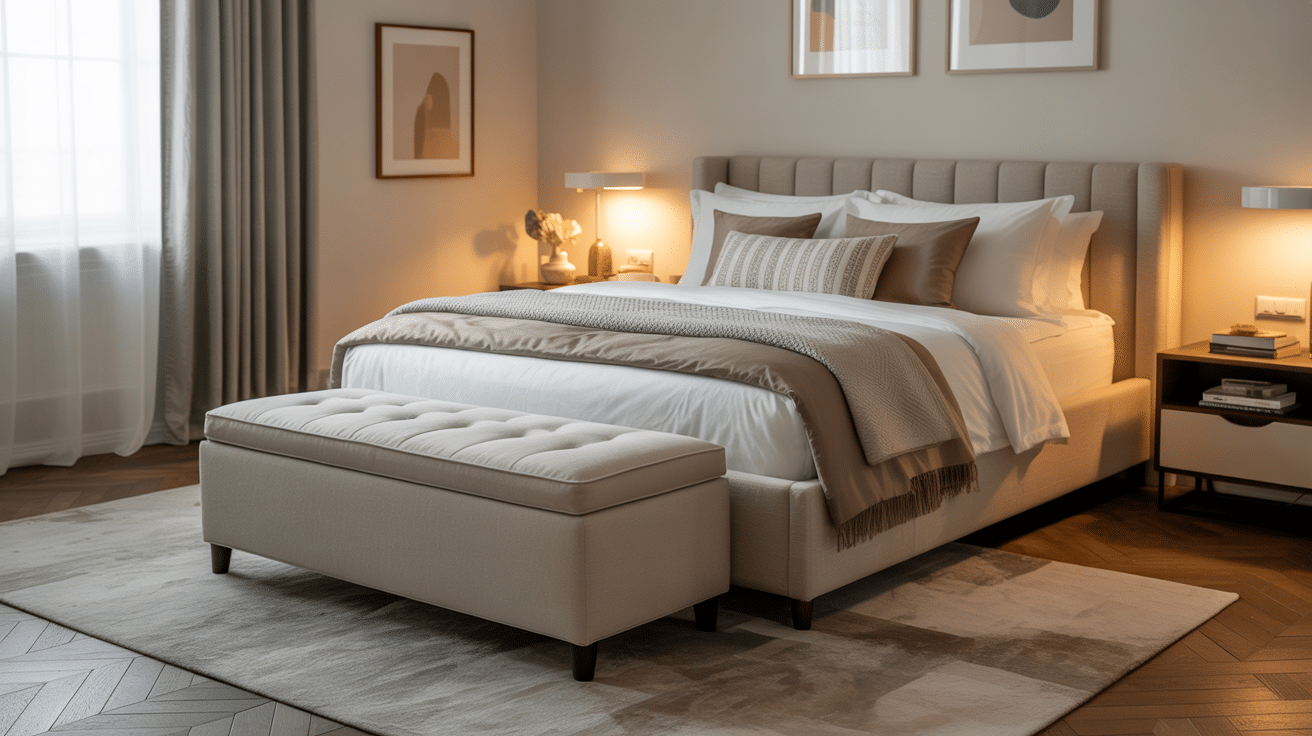
End-of-bed ottomans are practical and stylish, offering a spot for sitting, laying out clothes, or storing blankets and seasonal items.
To keep the bedroom comfortable, the ottoman should enhance the room’s flow without blocking walkways.
3. Entryway
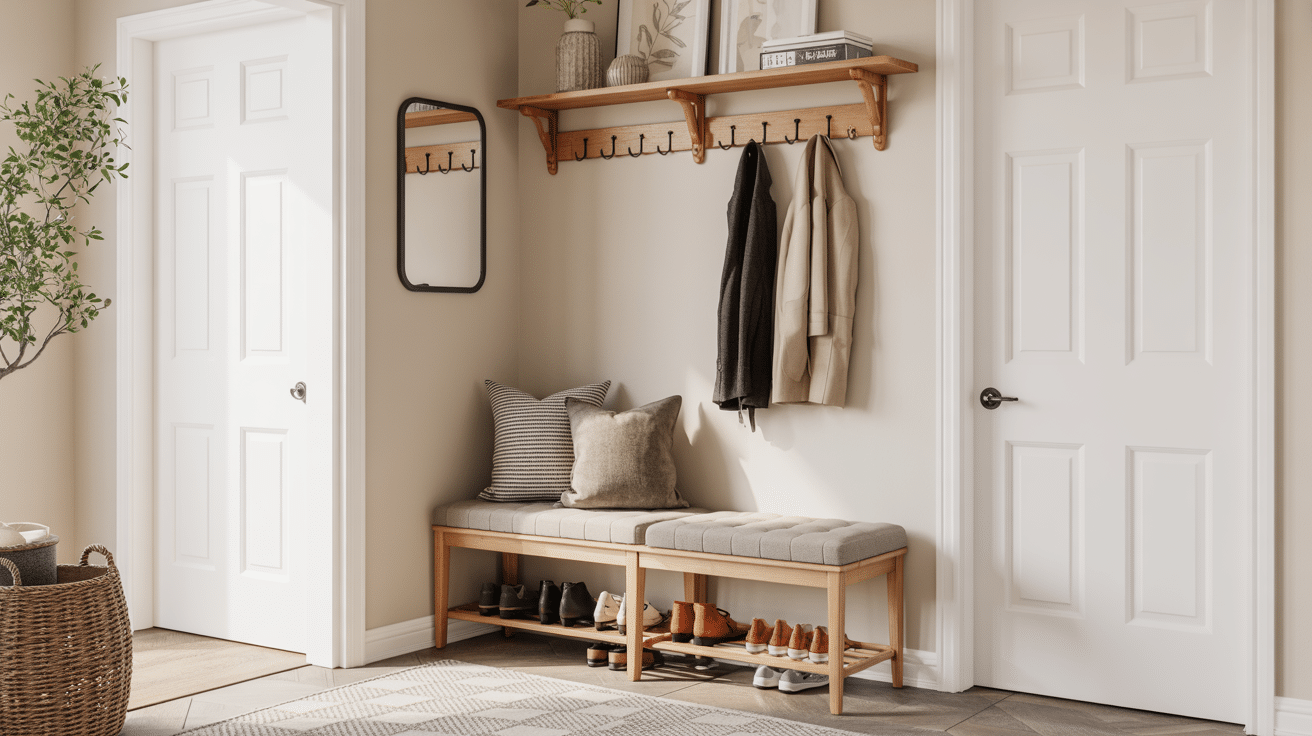
Ottomans work perfectly as entryway benches. Guests can sit while taking off their shoes. Hidden storage keeps bags, umbrellas, or dog leashes organized and out of sight.
Choose sturdy materials for high-traffic areas. Leather or durable fabric handles daily use better than delicate options.
4. Home Office Functionality
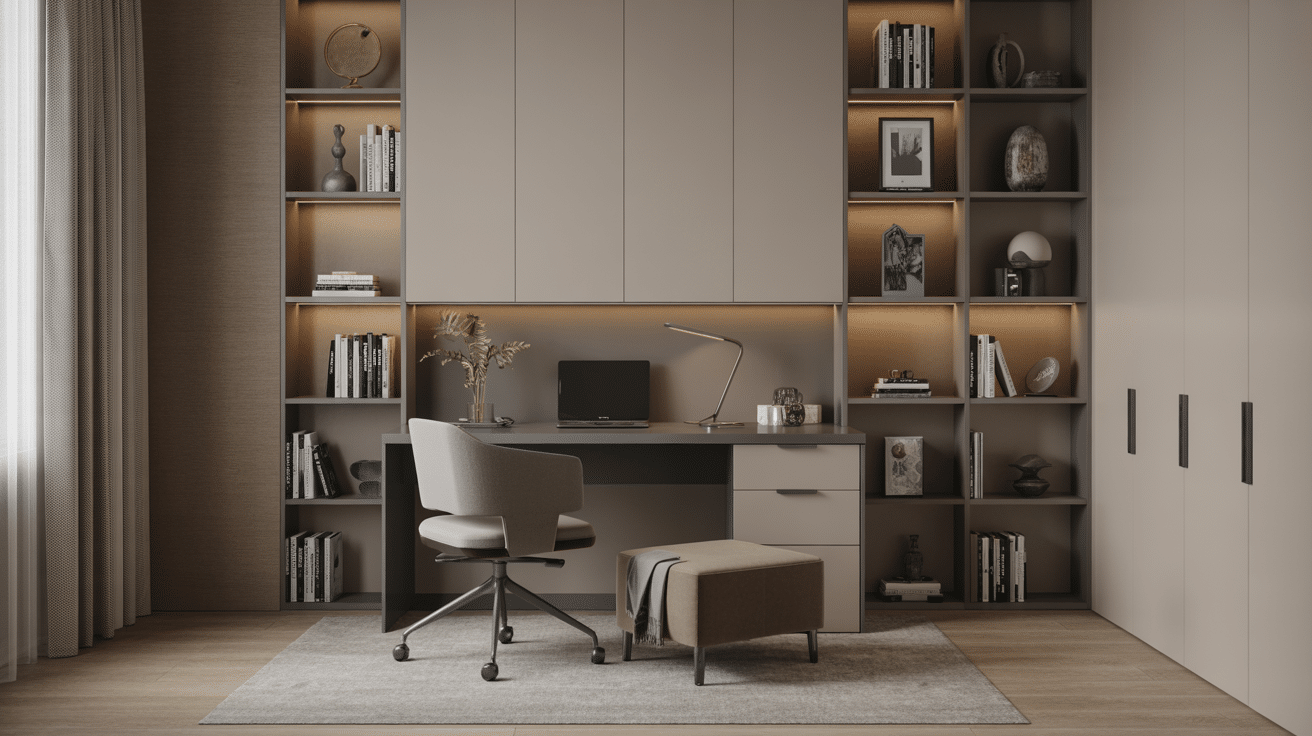
Compact ottomans fit perfectly under desks. I pull mine out for leg support during long work sessions. When not in use, it slides right back under.
Hidden storage ottomans keep office supplies organized. Store cables, notebooks, or files inside. Your workspace stays clean and professional-looking.
Practical Tips for Making the Right Choice
Choosing the right ottoman means thinking about how you’ll actually use it and where it’ll go.
- Measure your space: Leave at least 18 inches between the ottoman and other furniture for easy movement.
- Match your needs: Need storage? Get a storage ottoman. Want a coffee table? Choose a flat-topped style. Function comes first.
- Check the height: Ottomans should be the same height as your sofa seat or slightly lower for footrest use.
- Pick durable fabric: High-traffic areas need tough materials like leather or performance fabrics. Bedrooms can handle velvet or linen.
- Consider the shape: Round ottomans work in tight spaces. Square or rectangular ones fit better along walls or at the foot of beds.
- Test stability: Press down on it to check firmness, especially if you’ll sit on it regularly.
- Check mobility: If you’ll move it often, look for lightweight options. Heavier ottomans work as permanent fixtures
Smart Styling Ideas
Small styling touches can change your ottoman from a functional piece of furniture into a design statement. These simple tricks help you maximize the style impact of your investment.
1. Use trays to turn an ottoman into a coffee table: A decorative tray creates a stable surface for drinks, books, or candles. Remove it when you need extra seating.
2. Layer with a throw for comfort and texture: Draping a soft blanket adds visual interest and makes your space cozier. Choose throws that complement your room’s colors.
3. Mix ottomans in pairs for symmetry and balance: Two matching ottomans create cohesion in larger rooms. You can also pair different shapes for visual contrast.
4. Add plants or books on top for personality: A small potted plant or stack of books makes your ottoman feel more personal and lived-in.
5. Consider height variations for dynamic looks: Combining tall and short ottomans creates visual layers that make your room more interesting to look at.
When you understand what an ottoman is and how it can serve multiple purposes, you’ll see it’s more than just a stylish accent.
A well-chosen ottoman adds comfort, solves everyday problems, and works hard in your daily life.
Ready to shop? Measure your space, list your must-have features, and test stability before buying. The right ottoman will quickly become one of your favorite pieces of furniture.


